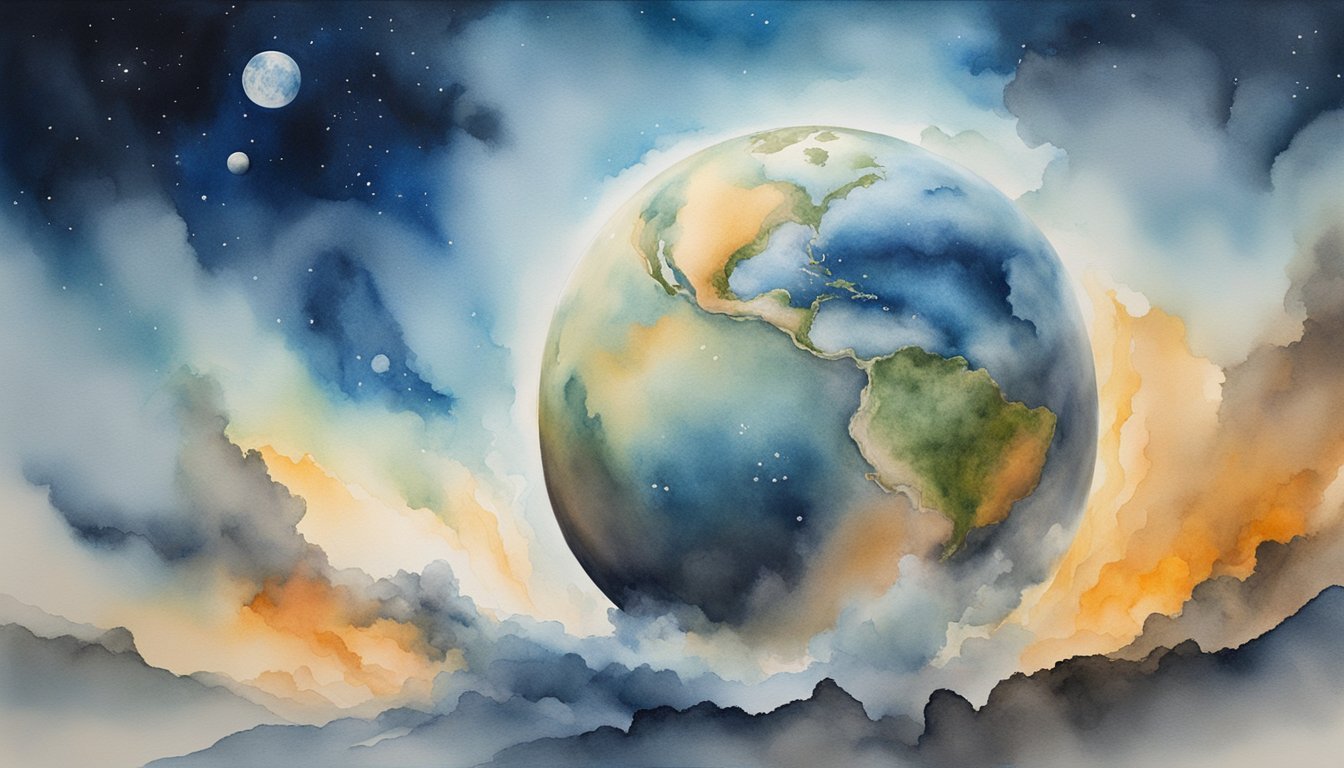Determining Earth’s Age
The determination of Earth’s age is a complex process that has evolved over time, involving cutting-edge science and ancient extraterrestrial materials.
Radiometric Dating
Radiometric dating is a method used by scientists to date rocks and minerals using the decay of radioactive isotopes. Uranium-lead dating, for example, relies on the decay of uranium into lead to determine the age of a rock. The half-life of these isotopes—how long it takes for half of the parent isotopes to turn into daughter isotopes—is pivotal in calculating the timeline of Earth’s history.
Oldest Earth Materials
The oldest Earth materials are zircon grains found in Western Australia. These zircon grains are crucial because they can be dated back billions of years. By studying these ancient grains, scientists have concluded that the Earth is at least 4.374 billion years old.
Influence of Extraterrestrial Objects
Meteorites have played a significant role in determining Earth’s age. For instance, the Canyon Diablo meteorite has been instrumental in this regard. These meteorites are considered to be remnants of the early Solar System and are believed to have a similar age as the planet itself.
Development of Dating Methods
The development of dating methods has been shaped by the contributions of many geologists, such as Lord Kelvin, Arthur Holmes, Charles Lyell, and Nicolas Steno. Arthur Holmes’s work on radiometric dating in the early 20th century and the principles of stratigraphy proposed by Lyell and Steno have been fundamental to the understanding of both the rock cycle and the age of the Earth.
Does the Age of the Earth Affect the Number of Houses in the World?
The age of the Earth plays a fascinating role in urban development and human habitation. As civilizations evolve, so do their structures. This historical growth trend is crucial when exploring the total number of global houses, revealing patterns of expansion influenced by population dynamics and cultural shifts over millennia.
Earth’s Formational History

The age of Earth, which is estimated to be about 4.54 billion years, plays a crucial role in understanding its formational history. From its fiery beginning to the complex system it is today, the Earth has undergone a series of transformative events shaped by various processes.
Accretion and Differentiation
During the early stages of the solar system, Earth formed through the process of accretion, where dust and planetesimals collided and clumped together over a period of millions of years. As the planet grew, its interior heated up and underwent differentiation, resulting in the formation of the layered structure comprising the crust, mantle, and core. This early, intense heat also led to widespread volcanic activity, releasing gases that formed Earth’s early atmosphere.
Tectonic and Surface Evolution
The surface of Earth has been continually reshaped by tectonic forces, where plate tectonics leads to the formation of continents, mountains, and ocean basins. This process involves the movement of large slabs of the Earth’s crust and upper mantle, causing phenomena such as earthquakes, volcanic activity, and the creation of new crust at mid-ocean ridges and destruction at subduction zones. Over billions of years, these changes have sculpted the planet’s surface into the diverse landscape we see today.
Record of Life on Earth
Life on Earth began over 3.5 billion years ago, with the oldest evidence found in strata from Australia. The fossilized remains of ancient organisms found in rock layers provide a chronological record of evolution. Over time, simple organisms evolved into more complex forms, leading to the diverse array of life that populate the planet, from microscopic bacteria to the vast multicellular organisms roaming the Earth today.
The Sun and Earth Relationship
The relationship between the Earth and the Sun has had a profound impact on the development of the planet. The Sun’s energy supports life through photosynthesis, drives the climate, and affects the weather patterns that shape natural landscapes. Furthermore, the Moon, which is believed to have formed from the debris of a giant impact between the proto-Earth and a Mars-sized body, has stabilized Earth’s axis and influenced the development of life through the regulation of climate over geological timescales.

